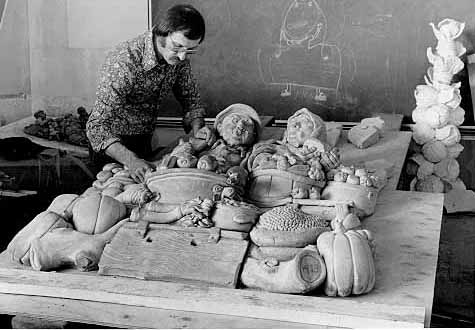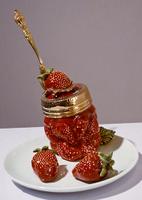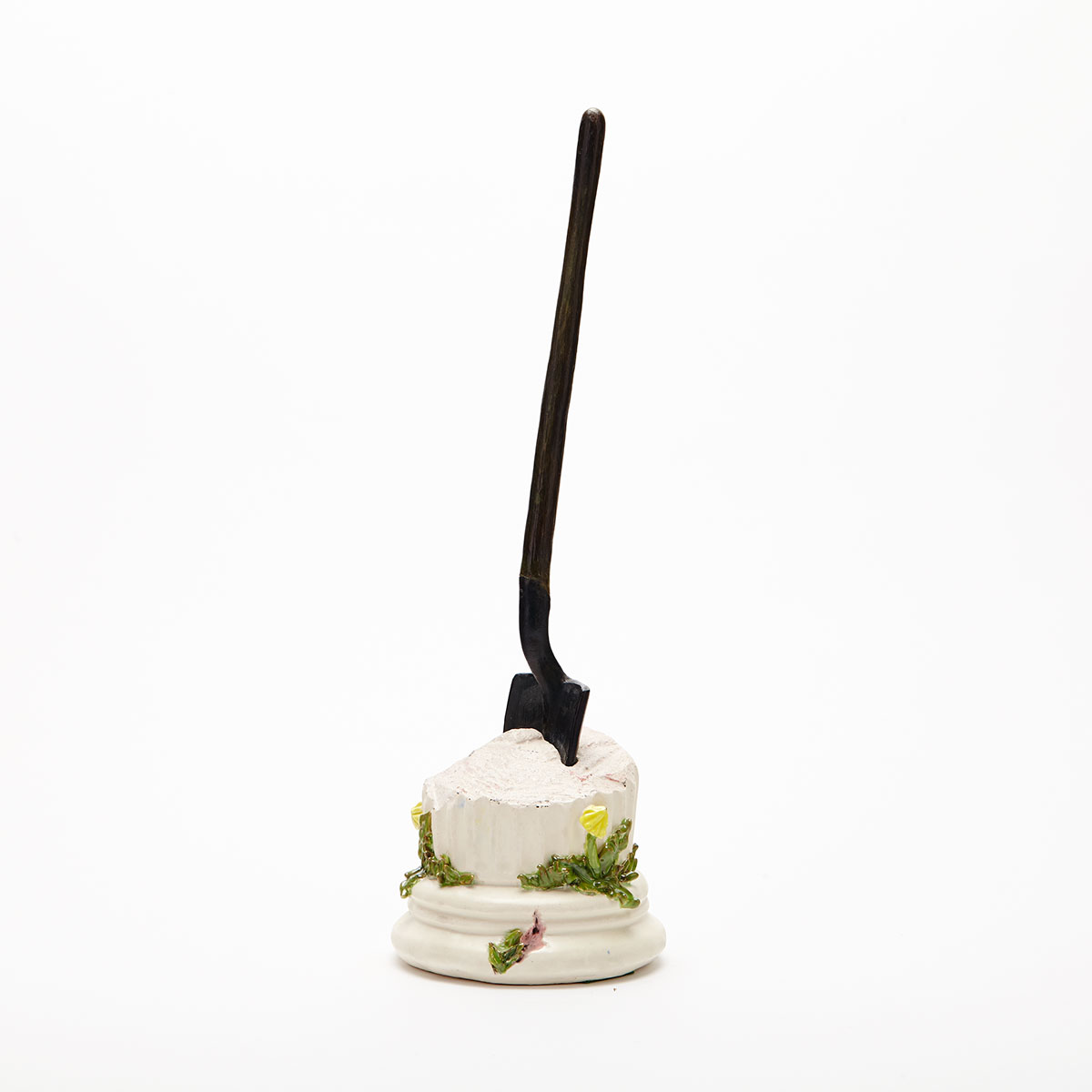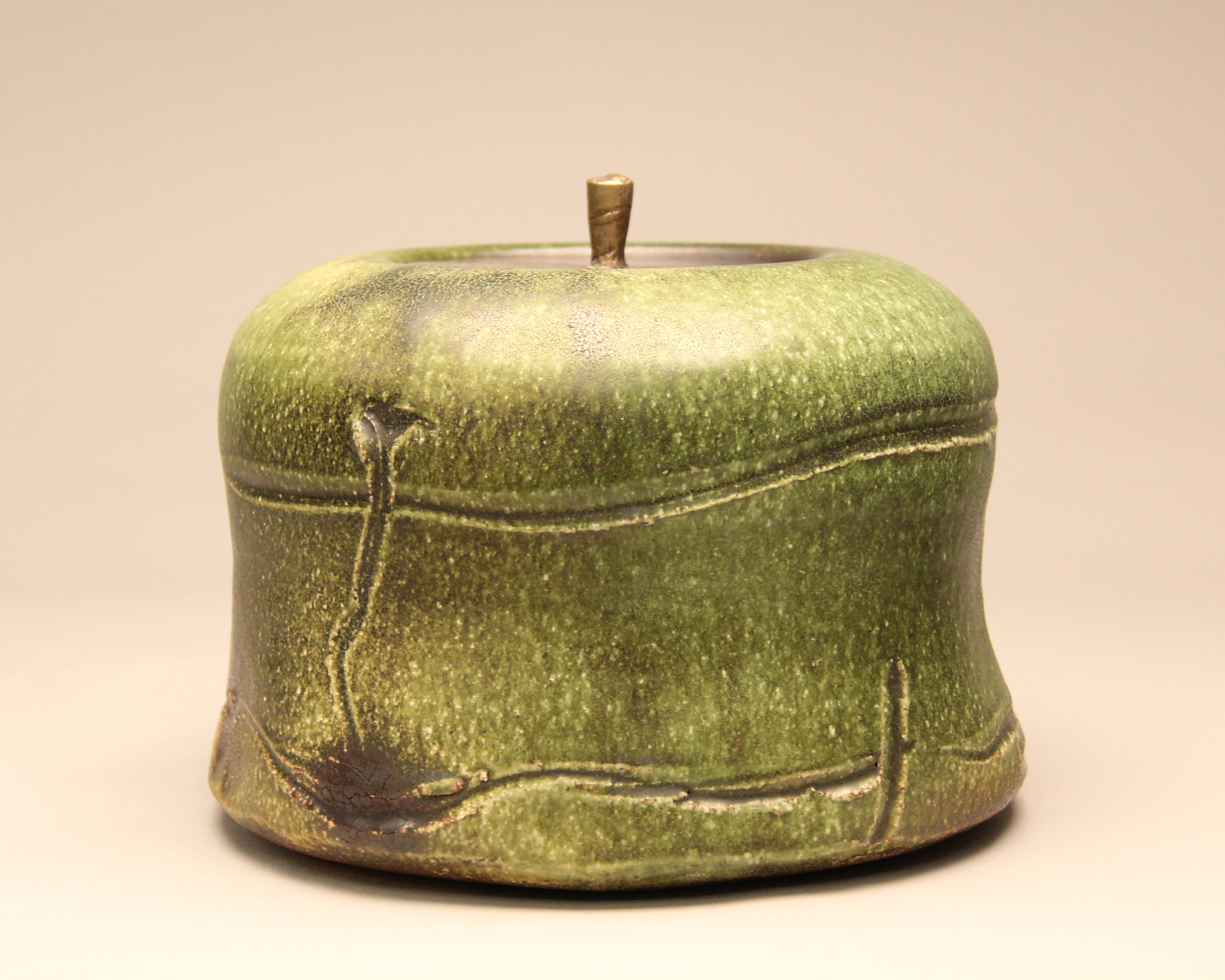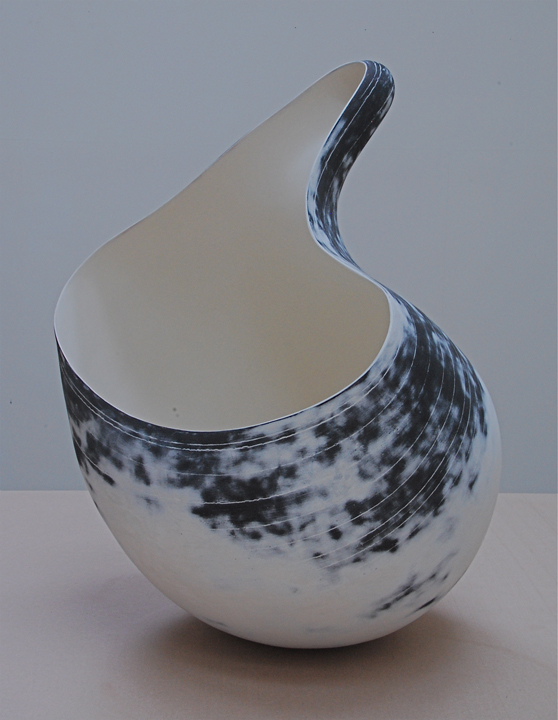Contemporary Ceramics
The much celebrated Danish-born Kjeld and Erica Deichmann, whose New Brunswick studio was the subject of two National Film Board documentaries, and Alma and Ernst Lorenzen in Nova Scotia established the craft on the Atlantic coast. Theo and Susan Harlander, Jimmie and Selma Clennell, Nunzia D’Angelo Zavi and Jarko Zavi, and Konrad Sadowski and Krystyna Sadowska were based in Ontario. Adolf and Louise Schwenk and Herta and Walter Gerz were active on the West Coast. For the most part their pottery shared a European sensibility favouring figurative decoration hand-painted in Scandinavian hues of browns, greens, and blues and simple functional shapes. The annual competition, the Ceramic National Exhibition in Syracuse, New York, was a favourite venue for the first generation of studio potters to exhibit their functional work and enhance their profile.
Canadian Ceramics Comes of Age
In the 1960s and 1970s, Canadian ceramics entered a second phase defined as a British clay invasion by three important individuals: John Chalke arrived in 1967 and settled in Alberta, followed by Robin Hopper in 1968 who first taught at Georgian College in Ontario before moving to British Columbia and lastly Roger Kerslake who immigrated to Ontario in 1970. All three in various ways introduced the Anglo-Asian aesthetic, popularized by Bernard Leach. For several decades, high-fired stoneware pots in neutral glazes of shino white, temmoku brown, and celadon green emulating early Chinese pottery and Japanese folk (Mingei) pottery became the prevailing style. Further promoting the Leach school of handmade functional pottery was John Reeve along with several Canadians who apprenticed at his St. Ives pottery in Cornwall in the 1960s and 1970s and returned to Canada to teach and set up their own potteries.
Providing a vibrant alternative to Anglo-Asian pottery were the American art schools lead by Peter Voulkos in California who demonstrated an abstract expressionist approach: shattering the traditional pot by pulling, stretching and rupturing the form into haptic chunks of clay. Also countering the Leachian “Sung standard” and releasing the medium from the tyranny of function was another Californian, David Gihooly, who joined the University of Saskatchewan in Regina in 1969. Together with Victor Cicansky, Joe Fafard and Marilyn Levine, he forged the influential Regina Clay Movement, which espoused Funk Art, an offshoot of 1960s Pop Art reacting against modernism and the good taste of the cultural elite. Their high-realist ceramics of popular imagery incorporated irony and folksy themes on Prairie life or send-ups of contemporary culture. A third American, Walter Ostrom, moved out East in 1969 to teach and run the ceramics department at the Nova Scotia College of Art and Design (now the Nova Scotia College of Art and Design University) in Halifax. He opened the way for colour and decoration on functional, tin-glazed earthenware, known as majolica, inspiring a generation of artists to embrace pattern, ornament and irony, the tenets of postmodernism.
A Canadian Sensibility
By the 1970s, some ceramicists began to show a Canadian sensibility. While not a style or school per se, they illustrated a shared desire to evoke Canada’s rugged rural terrain in clay. Steve Heinemann in Ontario, Robert Archambeau in Manitoba, John Chalke and Les Manning in Alberta, and Robin Hopper and Walter Dexter in British Columbia, for example, manipulated clay bodies and glazes to conjure the cracks, striations and horizons of the Canadian Shield and Rocky Mountains.
In Québec, studio pottery was shaped by Gaëtan Beaudin who trained at the École des Beaux-Arts in Montréal and founded an important workshop and school in North Hatley in the late 1950s and 1960s where he taught handmade functional pottery in traditional wood-fired Asian stoneware and raku. In 1973, he abandoned craft and founded his own ceramic tableware manufacturer SIAL II, which synthesized craft and commercial techniques.
During the late 1980s and 1990s, a new emphasis on conceptual thinking was developed particularly by Québec ceramicists Léopold L. Foulem, Paul Mathieu and Richard Milette. They deconstructed vases, teapots and other tableware using a combination of hand-techniques, moulds and found objects rendering them non-functional to better investigate the specificity of the medium, often with a sense of kitsch and humour. The nomenclature of potter, pot and pottery fell out of fashion, and ceramicist, ceramist, ceramics and vessel became the new vocabulary for better expressing artistic meanings and metaphors. This same period witnessed a maturing of figurative ceramic sculpture as expressed by Susan Low-Beer and Ann Roberts in Ontario and Kathy Venter in British Columbia.
Into the 21st Century
In the early 21st century, the field of ceramics became especially rich and diverse and the rigid categories and dictums of the past began to fade. Ceramicists are less regionally bound, studying in graduate and undergraduate programs across the country and abroad or in artist residencies in Europe, the United States and Jingdezhen, China. The debate continues as to whether the medium is art or craft amongst critics and curators but less so amongst the new generation of artists. There is far less reverence for skill as witnessed by the arrival of sloppy craft, articulated by a messy and loose handling of material by artists like Alwyn O’Brien in British Columbia and Linda Sormin in Ontario. For Rory MacDonald in Nova Scotia or Robin Lambert in Alberta engaging ceramics with the community both in and outside the white cube gallery is a strategy to activate the medium to broader and more diverse audiences and is known as craftivism.
The vessel and the issue of containment — the paradox between positive and negative space — continues to hold interest for many current artists such as Steve Heinemann in Ontario. A keen focus on figurative sculpture and figurines and a predilection for narrative and storytelling marks the field, as witnessed by the work of Janet Macpherson, Lindsay Montgomery, Kate Hyde and Magdolene Dykstra, all from Ontario. Some prefer the immersive and the theatricality of installations to create a total interactive environment in clay, including artists like Neil Forrest in Nova Scotia, Amélie Proulx in Québec and Eliza Au in British Columbia. Also important for reinvigorating the field are artists who did not study ceramics formally at art school but choose to embrace the medium in their practice, notably Shary Boyle from Ontario, Clint Neufeld in Saskatchewan and Brendan Tang from British Columbia who each follow a very individualized approach to making pottery. Throughout these activities studio pottery endures. Whether it is wood-fired country style stoneware by Robin DuPont in Alberta or urban pastel coloured wheel thrown porcelain tableware by Thomas Aitken in Ontario, they represent the roots of contemporary ceramics and its lasting relevance.
Craft in Canada
According to the 2003 study, “Profile and Development Strategy for Craft in Canada,” commissioned by the Canadian Crafts Federation, there are 22,600 people working in craft-related fields generating $727 million annually, with almost $100 million in exports. The report estimates that 14,048 craft studios are active in Canada, including 11,968 full-time craft professionals, and 10,629 craft makers who work part-time.
Many organizations designed to give individuals collective strength and services have been established since 1955, often partly funded by government grants. In many provinces, ceramic organizations affiliate with or have their functions fulfilled by provincial or territorial umbrella organizations. Of the purely ceramic organizations, Ontario Potters’ Association, established 1948, is the largest. The 10 provincial crafts councils form the membership of the Canadian Crafts Federation (CCF), which serves as liaison between the federal government and the crafts community. Founded in 1998, the CCF replaced the Canadian Crafts Council, which dissolved in 1996. A national organization called Ceramic Masters was founded in 1975. The organization changed its name to Ceramists Canada shortly thereafter, but gradually lost impetus in the 1980s. Earlier, the Canadian Guild of Potters had attempted to establish a national focus.
A tradition of Aboriginal and Inuit work in clay was not strongly established, as cookware, ceremonial items and containers were supplied mostly by other means. Significant involvement by Aboriginal peoples and Inuit in the contemporary period is naturally limited. Important but isolated cases are the works from the Rankin Inlet Pottery, which operated from 1963 to 1976, and that in Gleichen, Alberta. Mohawk Pottery was established in the late 1950s at Ohsweken, Ontario, and continued into the 1970s. Founded by Elda and Oliver Smith, it is now called Talking Earth Pottery run by Steve Smith and a collective of artists and the work is characterized by carved imagery depicting aboriginal themes in a contemporary aesthetic. Artist Carl Beam took up low-fired earthenware, making simple bowl forms depicting stylized politicized images challenging conventional views related to the threatened Aboriginal culture.
Workshops, providing students with exposure to methods over one or more days, are run by schools and organizations and have been very influential in the maturation of ceramics in Canada. They have also offered the opportunity to view most of the world's major practitioners at work. Formal education in ceramics has occurred entirely as part of the general development in crafts; an apprenticeship system has not existed. The 1980s and 1990s saw closure or downsizing of several once-burgeoning university ceramics programs, progressively forcing more prospective students to pursue their interests in other countries. (Paradoxically, art and community centres consistently report capacity enrolment in ceramics classes.)
Periodicals (except for Tactile, which ceased publication in August 1976) have been few, foreign in origin or provincial in scope. The longest lasting of these are Fusion, published by the Ontario Clay and Glass Association, and Contact, which was published since 1975 by the Alberta Potters' Association and then privately as a national/international magazine until it ceased publication in 1999. In 2006, the Ontario Crafts Council relaunched its magazine Ontario Craft as Studio: Craft and Design in Canada to reflecta national and more interdisciplinary scope.
Adequate museum exposure and galleries have been rare. The Cartwright Street Gallery on Granville Island, BC, began showcasing work in all craft media in 1980. In the early 1990s, it was renamed the Canadian Craft Museum and relocated to downtown Vancouver, where it remained until it closed in 2002. The Canadian Clay and Glass Gallery opened in Waterloo, Ontario, in the summer of 1993 with the express purpose of bringing a national voice to ceramics and glass art in this country. The Gardiner Museum in Toronto opened initially in 1984 as a showcase for historic work; since 1995, the museum has been actively collecting and exhibiting contemporary ceramics. The Medalta International Artists in Residence in Medicine Hat, Alberta, opened in 1999 and became a full-time programme in 2009.
Ceramists can gain outside support for projects, travel and education through funding provided at the provincial level by crafts councils. Grants ranging from $3,000 to $34,000 are also available at the national level through the Canada Council for the Arts. Additionally, the Canada Council has a purchase program, the Art Bank, and administers various awards. Of these, the most applicable to ceramists is the Governor General’s Award in Visual and Media Arts, formerly known as the Saidye Bronfman Award. Two additional significant awards for ceramics are The Winifred Shantz Award and the RBC People’s Choice Award presented by the Gardiner Museum.

 Share on Facebook
Share on Facebook Share on X
Share on X Share by Email
Share by Email Share on Google Classroom
Share on Google Classroom


